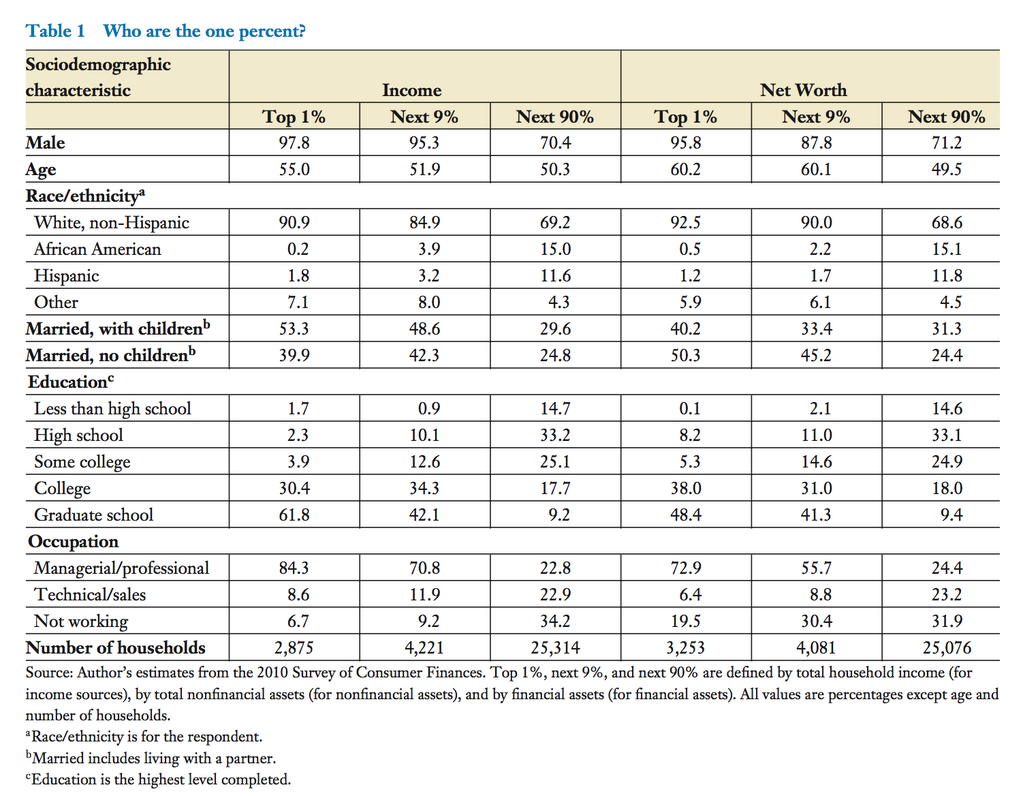Matt Yglesias says yes, noting that “the overwhelming maleness of the top 1 percent is also interesting in a world where some people are proclaiming that the economy is working great for women.” He immediately backs off a bit, noting that of course most of the men in the top 1% are married (over 90% of them, in fact) – so a lot of the benefits of being a one percenter accrue to women as well. But is that what the data actually tell us? Here is the table in question, from an article by Lisa A. Keister in the Annual Review of Sociology.
If this table says that the top 1% are 98% male, it also says that the bottom 90% are 70% male. We could also conclude that the US as a whole is 72.9% male. Of course that’s false – the Survey of Consumer Finances is a household-level survey, not an individual-level one. Presumably, then, these data are all for household heads (but they could be for whoever happened to answer the survey – I couldn’t find that in the original article).
The author of the article doesn’t handle this much better either, saying that “this table shows that members of the one percent are disproportionately male, white, and married”. It does not. What it does show – probably – is that households in the one percent are disproportionately male-headed. And it also strongly suggests that men lie further up the income scale than women. But we can’t look at this table and conclude that 98% of people in the top 1% of the income distribution are male.
EDIT: Yglesias’s updated post removes the assertion that the 1% are 98% male, but I’m leaving this up for posterity (and because the underlying article still makes a similar claim).

This dives a little bit into what I want to know about the gender wage gap. What I’m wondering is that I read somewhere (can’t remember where now, some article off of reddit) that the wage disparity where women in the US make 87 cents for every dollar a man makes is based on the fact that woman work less hours on average per week this resulting in much of this gap.
Is this true? And what does that mean?